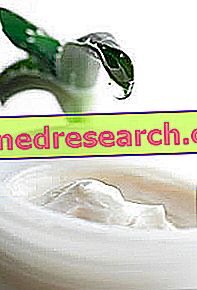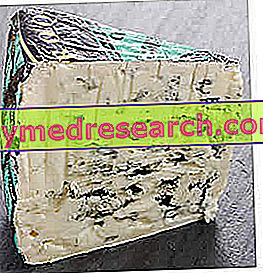
Prevention
It is first of all important to observe a healthy lifestyle, adopting habits that minimize the aforementioned risk factors, and avoiding the behaviors that promote them. Here is a list of small tips:
- Perform an appropriate sporting activity
- Use clothes that are not too tight, or heels that are too high
- Don't gain too much weight
- Follow a high fiber diet
- Not smoking

Treatments
Critical analysis and technical commentary on some microcirculation products on the market:
Tegevens Spray
Somatoline - Heavy leg treatment
Guam - Anti-fatigue leg gel
Bottega Verde - Relief legs with the Red Vine - Blueberry
Leg relief lotion
Lait jambes lourdes energizing emulsion
The actual therapeutic treatments involve the use of oral medications, for which the doctor's supervision is necessary. However, the plant world is rich in substances with vasoprotective, anti-inflammatory and anti-platelet aggregation, which can help reduce risk factors and peripheral venous stasis.
In particular, there are topical applications used with an adjuvant action, useful especially when the active ingredients are made or formulated to be more bioavailable, such as a gel that facilitates a rapid and high release on the skin.
Among the vehicles for topical formulations, liposomes deserve particular attention, the particular structure of which allows the active substances to be conveyed precisely in the areas of the body in which they perform their action. Escin liposomes, for example, are systems with a composition similar to that of skin cell membranes, which contain this functional substance within them.
Active substances
There are numerous medicinal plants that have shown efficacy in the treatment of venous insufficiencies. The plant extracts contain phytocomplexes, or mixtures of active ingredients, and components of the plant from which they derive, which act synergistically, resulting in a beneficial effect as a whole.
Centella asiatica
Centella or Asian Hydrocotyle (Gotu Kola) is a plant native to South East Asia. The active substances that characterize it are triterpenes, molecules capable of stimulating the synthesis of collagen (by fibroblasts) and of fibronectin, a protein with an important structure for supporting the wall of venous vessels. This causes an increase in the resistance of the blood capillary walls and a reduction in their permeability. This reduces the swelling of the lower limbs and improves microcirculation and tissue oxygenation.
Meliloto
The main constituents of Melilotus officinalis are coumarin glycosides, flavonoids, phenolic acids, saponins and tannins.
The coumarin glycosides possess anti-edema and anti-inflammatory activities. Several clinical studies have demonstrated a good efficacy of the Melilotus in reducing edema, pain and heaviness of the lower limbs, so that its use is recommended for disorders associated with chronic venous insufficiency and for the adjuvant treatment of thrombophlebitis, syndrome post-thrombotic, lymphatic congestion and haemorrhoidal diseases. For topical application it is also recommended in the presence of bruises and superficial ecchymoses.
Vitis vinifera
It is a plant native to the Mediterranean basin and the Middle East, currently cultivated in many countries of the world with a temperate climate. It has long been known for its protective function in relation to the walls of blood vessels, of which it is also capable of strengthening smooth muscles. The extracts obtained from the skin of the fruit and from the seeds (grape seeds) are the main source of active molecules, such as proanthocyanidins, resveratrol, flavonoids, polyunsaturated fatty acids, mineral salts and vitamins. Proanthocyanidins make up over 95% of the extracts of the seeds of this plant and have been shown to possess antioxidant (capture free radicals) and vaso-protective activity. The latter is due to the ability to strengthen the vessel wall, recreating the reticular structure of the collagen fibers of which it is composed, and inhibiting the enzymatic degradation of collagen, elastin and hyaluronic acid.
Horse chestnut
Horse Chestnut is a plant belonging to the Hippocastanaceae family. Originally from Asia and from the central area of the Balkan peninsula, it is now cultivated in many areas of Europe and North America. The different parts of the plant (seeds, leaves, bark) have been used in traditional medicine to treat wounds and hemorrhoids.
The active ingredient responsible for the therapeutic properties is escin, a mixture of triterpene saponins contained in fairly large quantities in the horse chestnut seeds. Other compounds present in the plant are flavonoids, oligosaccharides, polysaccharides, proanthocyanidins and condensed tannins.
Escin has a "sealing" effect on the capillary membranes, because it reduces the leakage of liquids in the interstitial spaces. In this way the passage of water towards the tissues is limited, while leaving the one in the opposite sense unchanged and favoring the return of blood to the heart. Blood reflux is also facilitated by an increase in the venous wall muscle tone.
This activity reduces the discomfort associated with excess liquid stasis, which is determined by venous and lymphatic insufficiency and causes a feeling of heaviness in the legs and pain.
Butcher's Broom
Butcher's broom ( Ruscus aculeatus ), or Rusco, is an evergreen woody plant, up to 80 cm tall and widespread in Europe and the Middle East, of which the rhizome is used for phytotherapeutic purposes. The main constituents of this plant are the ruscogenins, molecules with phlebotonic, capillar-protective, anti-inflammatory and diuretic activities. Butcher's broom is useful in the treatment of venous insufficiency associated with pain, swelling and heaviness in the legs.



